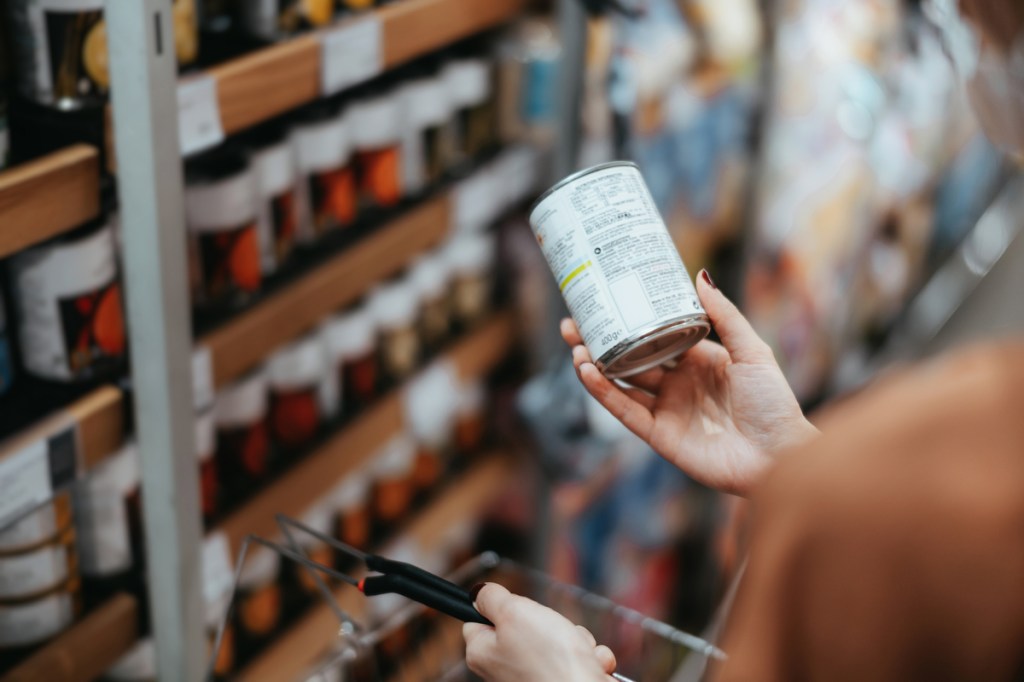CPG retailers and manufacturers: Say farewell to the record sales growth the industry has experienced this year. Year-over-year sales comparisons continue to track above pre-COVID-19 conditions in most markets, but the huge sales spikes we saw in March, April, and May are unlikely to be repeated in 2021.
With the dissemination of vaccines in the months ahead, and as expectations of more normal behaviors edge closer, we expect that a larger portion of consumer spending will shift from grocery to out-of-home spend in sectors that have suffered—bars, restaurants, and travel.
But even that expanded spending will be influenced by recessionary conditions in most countries where COVID-19 leaves a trail of high unemployment, lower levels of confidence, and economies that will take years to fully recover.
Retailers and manufacturers that set stock price records in 2020 will be hard-pressed to see similar gains in 2021. The CPG industry will be forced to focus on quick recalibrations of relevance in a world where consumers have shopped differently; through the course of the year, NielsenIQ charted changes in the importance of store locations and also tracked the historic growth in online purchasing.
2021 will involve a new playing field, but industry players can still maximize growth by setting the right goals and resolutions.
Following are some of NielsenIQ’s top suggestions for staying relevant in 2021.
1. Segment strategies for the sliding scale of consumers
Socio-economic consequences will continue to weigh heavily on spending decisions, and the impact across consumer groups won’t be equal. Four consumption patterns that emerged as a result of COVID-19—resets in basket, rationale, affordability, and homebody mentality—are heightening disparities between constrained spenders and insulated spenders. And we’re seeing even further splintering in holiday spending habits based on the extent of social and physical restrictions that individual consumers are experiencing.
In 2021, constrained spenders will continue seeking out cheaper alternatives to the product options they would normally buy, opting for more value offerings and private label products, at least for their everyday staples. Tiering products and pricing will become increasingly important as the year progresses.
Meanwhile, brands and retailers have an opportunity to continue to deliver on the needs of consumers whose incomes remain unchanged by the pandemic and may even have more disposable income in 2021 after deferring the travel, dining, and entertainment costs they anticipated in 2020. From higher-priced, sustainability-focused products for insulated consumers who are reinvigorated to follow eco-friendly practices, to premium specialty goods for those who want to treat themselves and others, 2021 presents opportunities for sustainability and premiumization.
2. Recalibrate assortment as consumers shift shopping routes
With consumers exiting commercial and city hubs to suburban and rural ‘residential workplaces,’ they’re shifting where they shop for groceries. Many will not return to pre-COVID commuting habits.
Retailers and manufacturers are adapting to low foot traffic in urban hubs (a strategic focus, historically) and surges in more suburban, or even rural, areas. Brands will need to focus on maximizing their presence in these newly popular stores in lower-density locations, while retailers may be forced to consider closing or downsizing some stores in higher-density locations and revamping others that now have more demand.
Further complexity comes with these shifted shopping habits. Consumers shopping closer to home or in less-familiar locations are confronted with layouts and ranges of products that may be different from what they are used to. Savvy brands can view shop-shifting as a fresh start—a golden chance to recalibrate their assortment and packaging to meet the new needs of consumers who may be willing to ditch their loyalty to their usual brand choices in favor of an alternative. As a consequence, savvy retailers will re-evaluate their range and store formats to address this shift.
Brands and retailers will need to be joined at the hip.
3. Recommit to pandemic-fueled innovation
History shows that brands that maintain focus and continue to innovate in difficult economic times emerge stronger. But these are tough decisions. On the one hand, brands feel the impetus to appeal to more fragmented consumer demands across a much wider spectrum of price tiers, particularly as we see more polarization between constrained and insulated consumers. On the other hand, many brands are also reckoning with decisions taken earlier in the pandemic to pare back the number of SKUs they produce to address supply chain pressures and rapid shifts in consumer habits. Healthy innovation inside of SKU optimization will be critical.
And as the world moves towards a more normal state as 2021 progresses, brands will still continue to win with health- and efficacy-focused product innovations. Through the months of COVID-19, there have been clear signals from consumers that they want complete transparency on what is in the products they buy and what the benefits are.
Downsizing pack sizes will also win with many constrained consumers, as those who would normally be able to save money by buying larger, more economical pack sizes may be forced to actually buy smaller pack sizes as and when they can afford them. Cash flow issues for constrained consumers will be top of mind.
For more insulated consumers, food products that claim to have natural and high-quality ingredients will continue to appeal on the premium end of the pricing scale.
Retailers must be prepared for this dichotomy; while a reduction in SKUs has made it easier for them to manage their own inventory cycles, making room for the innovations that meet consumer needs is paramount.
4. Reinvigorate consumer impulse at the shelf with promotions
With supply chains normalizing, promotional sales in many markets are on the path toward pre-COVID levels. With tighter wallets, consumers will look for low prices and product promotions as a way to save, even from brands they wouldn’t normally purchase, at least in categories they determine to be low risk when making such adjustments.
Savvy brick-and-mortar retailers have an opportunity to reach more insulated, impetuous shoppers through ‘buy more, save more’ promotions, last-minute add-on products at discounted prices and free, packaged samples to encourage secondary purchases. They can also collaborate with manufacturers to extend the length of sales periods and continuously remind consumers of when and where they can anticipate a big promotional event.
5. Win locally, without neglecting multinational
When we envisioned a 2020 before COVID-19, we predicted that “manufacturers will produce locally to win globally”—a forecast that became an urgent reality as the disease led to upended supply chains, and consumers (in the early days of the disease) favored local products or products that had travelled through fewer sets of hands.
We expect that this gravity shift towards locally sourced products will continue to stick, though likely at lower levels. Much of this loyalty to local will be driven by desires to continue to support local suppliers who helped bridge the supply chain gaps during the days of heavy pandemic pantry stocking.
Conversely, trade policies will continue to play a role in what consumers buy, and how much it costs. For example, with a change in the administration in the U.S., it is likely that some protectionist policies will be reviewed. The outcomes of such changes, also playing out elsewhere in the world, will impact local pricing, demand, and availability considerations for retailers.
6. Treat omnichannel as omnipresent
In the challenging physical store environment of 2020, consumers wanted little more than to find what they needed and to leave the store. But online, with more time and no health concerns, they became more open to finding deals. The expanding pool of omnishoppers—particularly constrained consumers—will keep leveraging online channels as an essential way to research, compare prices, and hunt for the right deals before deciding whether to leave home to make the purchase at a physical store, buy it online, or click-and-collect their purchase.
Retailers would be wise to capitalize on their omnichannel capabilities as more shoppers compare products online in an effort to find the best deal before they make a purchase decision that may ultimately still be fulfilled offline. Recognizing there are many consumers who are new to online grocery shopping will be important in this context. Those who can deliver positive and successful user experiences will win online and offline.
Emerging technology will enhance omnichannel growth opportunities. Most prominently, retailers and brands have room to capitalize on shoppable livestreams, which is gaining popularity as a new shopping platform that is supported by innovative online channels and the accelerated shift toward online consumption. Also, mobile applications and augmented reality-based shopping will continue to grow in importance this year as consumers demand alternative shopping experiences at home.
Setting resolutions should underpin the start of any new year, but 2021 truly demands it.



